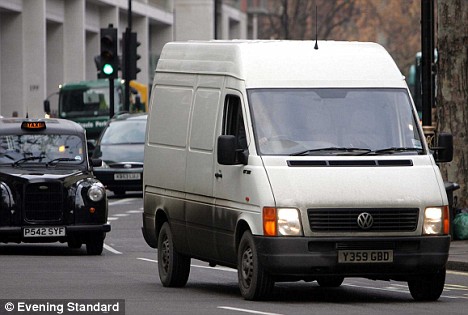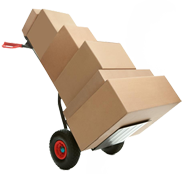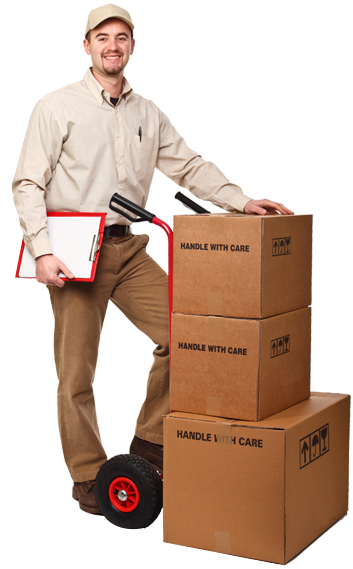Man Van Dublin

Man & Van Rubbish Clearance Guide
Man & van Rubbish Clearance is a cost effective, eco-friendly and easy way of getting rid of your large waste, but remarkably many people never ever even consider it. Here is our ultimate 2020 guide to how it works and the essential concerns to think about when you utilize it.
FIND MAN WITH A MAN DUBLIN
Man & Van Rubbish Clearance definition
Man & van rubbish clearance is generally specified as the loading and removal of bulky waste from a property by a man & van team. The service covers collection of waste from anywhere on the home, loading it into a truck, sweeping up any loose material, and providing the waste to a certified disposal center. Rates are based on the volume of waste got rid of and cover the disposal, transport and labour costs. Man & van rubbish clearance must not be confused with the ‘load & wait’ service used by skip companies which does not consist of any labour. It is among the many choices people can utilize for Rubbish Removal.
Who offers man and van rubbish clearance?
A variety of organisations provide the service. These consist of specialist man & van rubbish clearance companies (of which AllRemovals is certainly our preferred!), one-man bands, avoid hire companies, traditional house moving companies (who take away junk at the same time as doing your move), charities, and your regional council.
Every council is obliged to offer a subsidised collection service for bulky family items to its homeowners. The service is usually restricted to furnishings, appliances and other family ‘scrap’, rather than contractors and home improvement waste. This is since the latter is thought about ‘trade waste’ and not something the council ought to fund.
Personal waste companies, although likely to cost more than the council, take the complete range of large waste (rather than just family junk) and, unlike council teams, their teams will gather from anywhere on the home (consisting of upstairs and the back garden). If you do choose for a one-man band always inspect they have a waste provider license and their insurance covers them for waste removal.
Lots of charities like British Heart Foundation provide a free collection service for good quality, genuinely resalable products (which for couches and upholstered furnishings likewise implies having correct fire accreditation). Be sure to contact them if you have anything good. For the stuff that you know is real rubbish, please don’t lose their or your time.
Waste types- what bulky waste types can be removed?
Bulky waste implies in the context of man & van rubbish clearance any non-hazardous waste that can conveniently be raised by 2 individuals. This consists of contractors waste, fly-tipped waste, bulky devices (consisting of domestic fridges), furniture, bric-a-brac, carpet, plasterboard, garden waste and family scrap. For waste security, licensing & health and insurance coverage reasons, many firms will not remove the following harmful items:
- Asbestos (read our guide on safe disposal of asbestos).
- Batteries.
- Medical or medical waste, consisting of syringes.
- Fluorescent tubes.
- Industrial refrigerators, freezers and air conditioning systems.
- Gas cylinders and gas bottles.
- Hazardous & hazardous products.
- Oil, petrol, diesel.
- Paint & Cans of paint.
- Tires.
Weight constraints- do I need to worry about how heavy the waste is?
Man & van clearance firms usually don’t like and aren’t best fit to jobs with lots of very heavy demolition or excavation waste like soil, rubble and cement (often described as ‘inert waste’). Because their collection lorries are normally light items automobiles, this is. Light products lorries, although more affordable and easier to run than heavy products vehicles, must by law never weigh more than 3.5 tonnes. An empty LGV fuel, team and truck weighs 2.0- 2.5 tonnes, which leaves 1.0- 1.5 tonnes capability for the waste (this figure is called the car’s ‘payload’). That payload is fine if the waste is a mix of bulky products but not if it contains mainly inert waste. If you do have lots of very heavy, thick demolition or excavation waste, you will most likely be better offer working with an avoid.
Van sizes & types- what types are used and how huge are they?
Just like automobiles, vans differ substantially in size and type. The primary kinds of vans and trucks used for large waste are:.
- * Box Tipper- the most popular lorry for large waste, a box or caged tipper (visualized above) has a strong or mesh box at the back to consist of the waste and has a hydraulic tipper system to pour out the contents when the van goes to the pointer. The volume of the box on a waste tipper truck is generally 10 cubic backyards- 14 cubic yards.
- This type of van supplies lots of storage space and is most often used by removal companies when people move houses. It isn’t ideal for waste because the sides aren’t really strong (so can get damaged when heavy items are tossed in) and the lack of tipper implies the team has to handball whatever when they get to the pointer.
- Transit- transit vans are popular with shipment business and tradespeople as they are cheap, compact and easy to drive. They have moving door at the side and a rear door. They do not have a tipping system so take longer to empty than a tipper but the sides are made from metal, so more robust than a Luton. In the context of rubbish clearance they are most often used by people who use other services at the same time, like delivery or a trade. Other than sluggish offloading, their primary problems for waste removal are low ceiling and likewise dust and grit from builders’ waste getting stuck into the moving door system. Transit van volume are 8 yards to 14 backyards.
- Flatbed lorry- flatbeds are trucks with a flat bed at the back with really low or no sideboards. They are designed to carry heavy items and favoured by scaffolders, contractors merchants and tool hire organizations. They are not excellent for large waste (unless you are eliminating lots of very heavy inert waste) since the low sides prevent you from stacking great deals of bulky products safely.
Labour- what labour is included?
The labour is a key element of a man & van rubbish clearance. The service and cost includes clearing the waste from anywhere on the property and loading it onto the van. It will generally also include a sweep-up. Teams will often be delighted to break things down a bit to make them much easier to take or move up less space in the truck, do not anticipate them to undertake substantial demolition work or taking apart (eg. sawing a sofa in half to fit through doors). Be prepared to pay more for their time and effort if you require this extra service.
Rates- how does rates work and how much should I expect pay?
Rates for rubbish clearance are based on the volume of large waste eliminated and cover the labour, disposal and transportation fees. If you’re comparing prices and somebody is pricing estimate fractions of truck, keep in mind that trucks have different sizes and for that reason more affordable may not really indicate much better if it’s a smaller sized truck.
Keep in mind that a couple of special items- the most common are bed mattress, fridges and televisions- will incur a supplement because they require to be dealt with differently to general waste and this costs the waste clearance business a bit more in disposal charges.
As a rough guide, a complete 14 yard truck clearance need to cost around EUR360 (EUR300 ex BARREL) and 1/2 truck (ie. 7 cubic yards) around EUR220 (EUR180 ex VAT). Collection of single furnishings item ought to cost around EUR40- EUR50.
FYI, the national typical expense of a 6 cubic yard skip (prior to adding license charges and parking suspensions if placed on a roadway) is around EUR226 (EUR188 ex BARREL).
Collection time & location- do I have to exist when the rubbish is gathered?
Provided there is access to the junk and it is plainly identified what materials are to be taken and what are to remain, then there is no requirement for you to be present. Clearance companies can gather from anywhere on the property as long as there is access. You might leave the waste outside in an accessible location, for example your front garden, to permit easy gain access to if you can’t exist.
Collection size different- what if the real collection size is different to the size scheduled?
Then the collection team need to let you know prior to they charge and begin or credit you the distinction, if your collection size is bigger or smaller sized than you bought. If the job ends up bigger than booked and you ‘d prefer to cancel, allremovals deals customers the option of a refund.
Moving other items- can the team move my things from one location to another for me?
Generally, it’s not a good concept to use a rubbish business to move your stuff because the vans can be dirty. The teams are used to moving rubbish rather than valuable items indicating they most likely won’t take as much care as a professional removal business.
Messy floor- how to prevent rubbish screwing up my drive or lawn?
Most business will offer the location a thorough sweep up before they leave. If some of your waste is particularly untidy (e.g. debris, earth, damaged tiles) and you are concerned about leaving it on your lawn or driveway before the collection, we recommend saving it in debris bags or stacking it on a tarpaulin or ground sheet.
License- what sort of licensing is there?
To remove your waste a man & van firm or sole trader must be signed up with the Environment Firm or SEPA and have a valid waste carrier license. They ought to also be guaranteed to do the work and we advise if you are allowing team into your home you ask for picture ID and DBS checks (which utilized to be called CRB checks).
Documentation- should I expect any documents for the man & van waste collection?
When someone removes your waste is a waste transfer note, the essential documentation. This is a document that tape-records the responsibility of the waste being moved from one celebration to another. Strictly speaking if the waste is being gathered from a domestic residential or commercial property then any type of written confirmation suffices however if the kind removing your waste is a skilled and expert organisation then they must offer a waste transfer note as matter of course. If not, alarm bells need to begin to call!
Disposal & recycling- where does the waste go?
As soon as collected, unless passed on for reuse, the waste will be required to a licensed industrial waste transfer station where it is then recycled, sent out to waste-to-energy or landfilled. Find out more about bulky waste’s journey.
When to utilize and when not to utilize a man and van for large waste?
A man & van rubbish clearance is an excellent method to get rid of a wide range of large waste products from your home. Anything that’s too huge for your bin- from furnishings, home appliances and bric-a-brac to flooring, DIY waste and contractors waste. In most circumstances the service is significantly more affordable than a skip and all the labour is included, so you can actually just point and the waste will be eliminated from anywhere on the home.
The primary weak point of a man & van solution is its failure to manage big quantities of heavy, dense waste like soil and bricks, because of automobile weight limitations and likewise the time it requires to load a lot of that sort of loose, messy material. In those situations, we recommend working with a skip rather considering that weight is less of an issue and it’s also perfect for containment. Note if you do not have area at your property for an avoid, then think about requesting a wait & load service from your avoid supplier rather.
Bulky waste indicates in the context of man & van rubbish clearance any non-hazardous waste that can conveniently be raised by two people. Man & van clearance firms generally do not like and aren’t best matched to tasks with lots of very heavy demolition or excavation waste like cement, debris and soil (typically referred to as ‘inert waste’). * Box Tipper- the most popular lorry for large waste, a box or caged tipper (envisioned above) has a strong or mesh box at the back to consist of the waste and has a hydraulic tipper mechanism to put out the contents when the van goes to the tip. They are not excellent for bulky waste (unless you are getting rid of lots of extremely heavy inert waste) since the low sides avoid you from stacking lots of bulky products securely.
Strictly speaking if the waste is being gathered from a domestic property then any kind of written confirmation is sufficient but if the form removing your waste is a professional and knowledgeable organisation then they need to supply a waste transfer note as matter of course.
Our Services:
- HOUSE REMOVALS
- OFFICE REMOVALS
- FURNITURE REMOVAL
- PIANO REMOVALS
- WASTE CLEARANCE & RECYCLING
- COMMERCIAL REMOVALS
Useful Links:





20

years of
experienceAll Removals is a reliable Irish company that aims to ensure a smooth moving experience to all of its customers.Our removal firm has a full Dublin coverage and serves areas in All Ireland too. We can help with cross-country (Ireland) and international removals as well.

we make it faster
With All Removals it takes few minutes to complete an appointment, secure and fast.
Available at your location
We cover all Dublin and counties around but at the same time we offer our services to almost all Ireland.
on time delevery
98% off all our appointment are exactly in time and our customers always save their time and enjoy.

